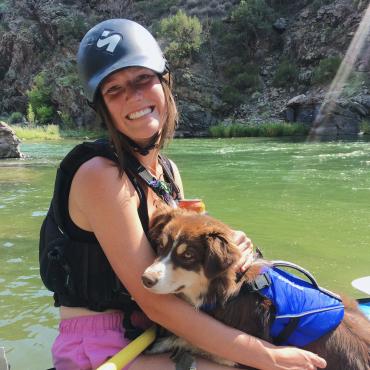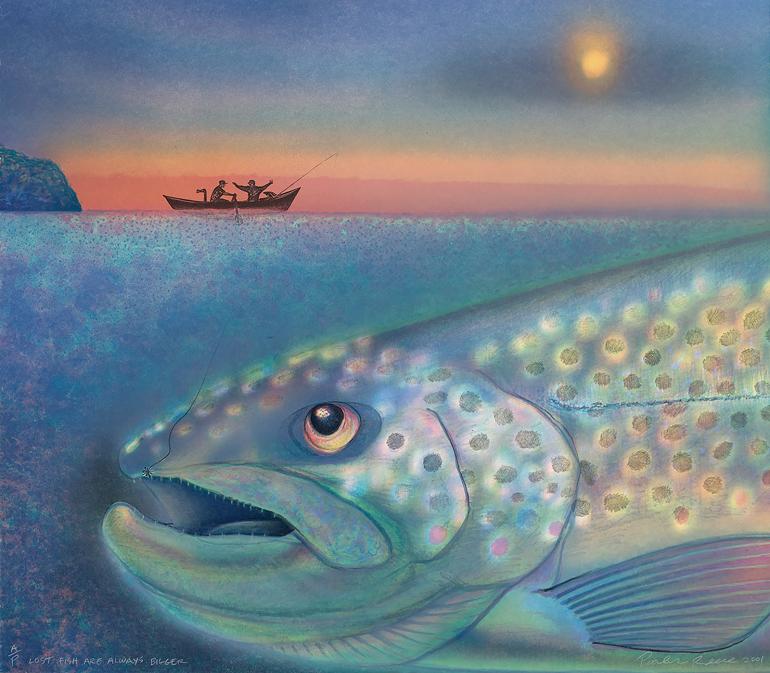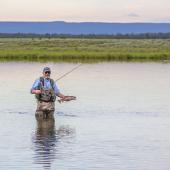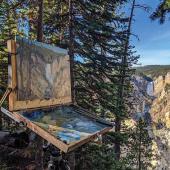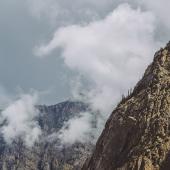My First Time: Parks Reece
Living, breathing, and painting trout.
Few figures have the presence of Livingston-based artist Parks Reece. With a brush dipped in wit and a palette full of irreverence, Reece has carved out a niche all his own, blending satire, surrealism, and environmental commentary in his art—earning him both chuckles and applause from art-lovers and environmentalists alike.
Reece was raised in the Tar Heel state, where he grew up creating art under the influence of his mother. He studied art in school, worked with youth groups to paint murals, and taught high-school art while residing in northern Wales. Then, in the late 1970s, he moved to Gardiner. Little did he know, the town’s population of shimmering river-dwellers would change the trajectory of his art career for years to come—though not his distinct southern drawl.
So Parks, tell us about your first time painting a trout.
I grew up fishing in little mountain streams in North Carolina with my grandfather. I didn’t trout fish much, until I moved to Gardiner in the late ’70s. I had a theory: instead of getting a job I hated, I’d live really cheap.
I ended up renting a dirt-floored apartment that used to be a stable, for $70 a month. It had a refrigerator, a heater, and electricity. I hunted rattlesnakes, rabbits, elk, and deer; and fished nearly every day. I was loving it! Eventually I got a job in Livingston running the Danforth Art Center. That’s the only job I would accept. I would make trout salad and trade it to the local librarian for a ride to Livingston every day.
Now, living on trout, I was looking at the fish a lot. I noticed that in different lightings, you could turn a fish slowly and it would change colors. It fascinated me. It was supernatural. As an artist, I wanted to capture those colors. My first painting was of a brown trout. I called it: “Radioactive Trout.” I was just overwhelmed by the beauty of the fish, so I exaggerated the colors. At some point, I realized it could be any color, and I painted it wild. That was in 1981. I traded my painting to another artist: Freeman Butts, for one of his paintings.
Soon, I was consumed by painting trout. But to paint them well, I needed to get the anatomy right. I started taking my watercolors down to the river and I learned to capture the colors. I learned how to draw them so they looked real. I’d catch them, paint them, then I’d go home and eat them.
In 1984, I scheduled myself for the last show before I quit working at the gallery. Outside magazine came and wrote an article about it. I sold most of my pieces, and got a bit of fame from that, and just kept on going. That’s the last time I ever worked for anybody.
Author’s note: While interviewing Parks, he also shared a story from one of his first times fishing—and it’s one worth telling:
“I was on a stream in North Carolina with my 84-year-old grandfather. Right when I was trying to land a fish, I looked down and my grandfather floated right by me. I threw the rod down and started to dive in, but he was a tough bird. That made him mad. ‘I didn’t need any help,’ he’d say later. He made his way out, and my grandmother later shook her head at me, too.”


